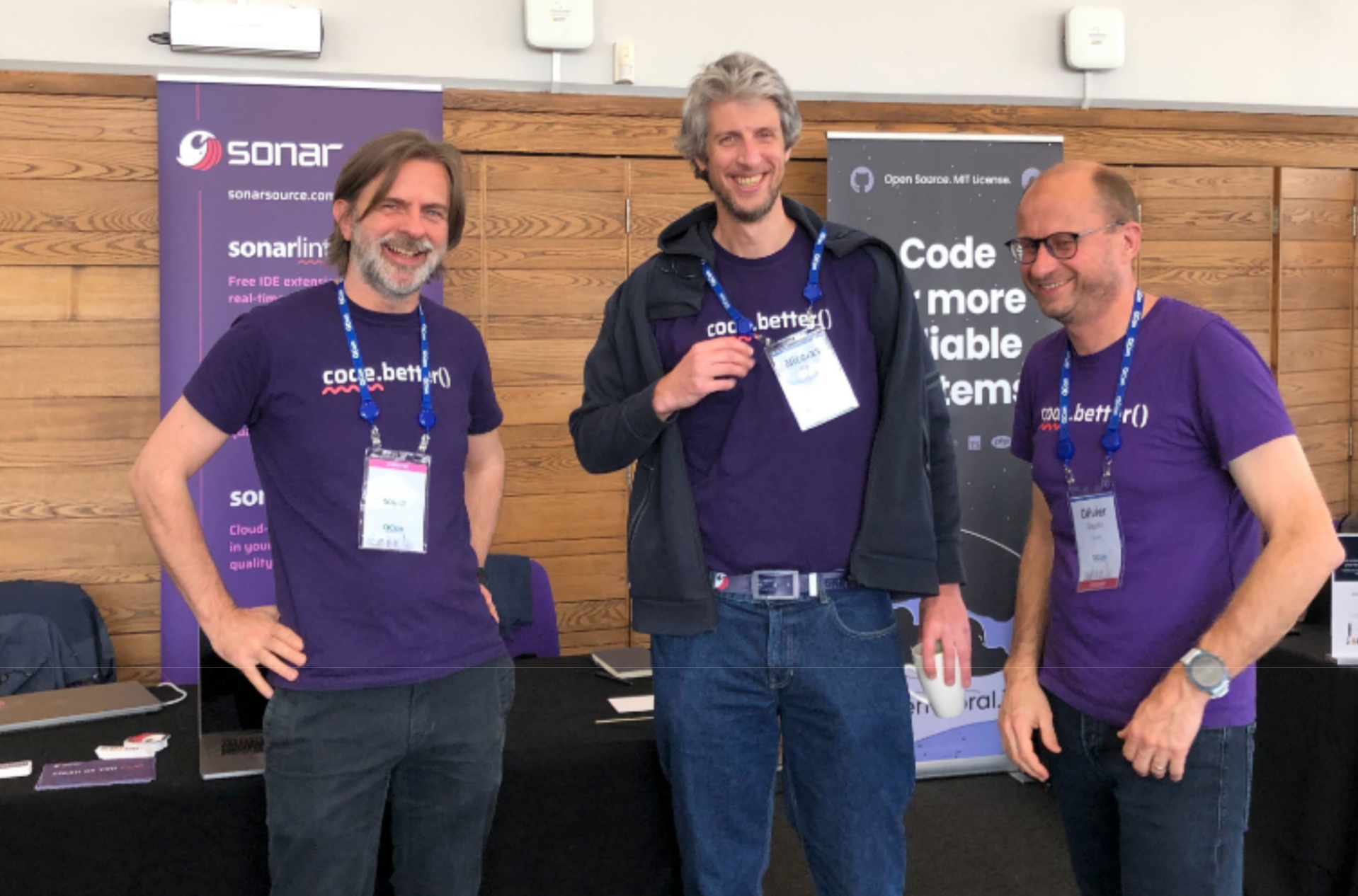This past spring, senior software engineers, software architects, and engineering team leaders from around the world attended QCon London to share information and adopt the right software innovations and practices.
Alongside top engineers from companies such as Microsoft, Meta, and GitLab, Olivier Gaudin, Sonar's founder took the stage to discuss Clean Code as the foundation of well-functioning development teams.

(Pictured left to right: Tom Howlett, Head of Product Management; Nicolas Peru, Head of Product Delivery; and Olivier Gaudin, Sonar founder and Chairman, at QCon London 2024)
When teams and their software work from bad code, both underperform. In his talk, Olivier explores how this can be easily remedied by taking just a few very simple steps toward a cleaner approach to code, regardless of the technology and tools in use or the seniority of the team. You can view the full presentation below, but for a quick jump into the key highlights, keep reading!
The Core of Software is Code
The world runs on software. When you use your car, buy a concert ticket on an app, message a friend over social media, or play music from a streaming service, all of these things are enabled through software. And code is what is at the core of the capabilities that software enables.
Every digital tool, application, or system starts as code written by developers. Code is essential for building, maintaining, and improving software. That’s why when an error or bug in code is pushed to production, the consequences can be massive. This could result in features not working properly, application crashes, and even more severe problems like negative impact on customers, damage to business reputation, and expensive setbacks.
For businesses to compete in today’s software-driven market, digital innovation is essential. With code at the foundation of this, it is vital that development teams are able to work efficiently and effectively. When there are big cracks in the foundation (i.e. lines of bad, insecure, and poorly written code), technical debt, security incidents, and availability issues can arise, placing innovation on the back burner. Organizations must invest in the right tools for their development teams, and ensure the right approach to software development is in place, so that code does what it should – drive business.
Good Software is Made of Clean Code
Poor-quality code can have wide-ranging repercussions and be detrimental to organizations on various levels. Only when the characteristics of Clean Code are met — consistent, intentional, adaptable, and responsible — can development teams be confident that the software is quality, maintainable, reliable, and secure.
Developers should focus their coding efforts with an eye toward quality control to ensure top performance. This can be done by practicing Clean as You Code (CaYC), whether writing the code yourself or working with code generated by AI. When a CaYC approach is taken to software development, developers have better control over their code and can ensure overall better application performance. This also results in reduced business and reputational risk, decreases code-level tech debt, and increases developer velocity.
Pairing this approach with the right tools is critical. Many code analysis tools currently focus on identifying security issues but what are the next steps for the developer when they receive this data? Different companies have their own ways of handling problems, often leaving teams to assess code issues on a case-by-case basis. Clean Code helps developers understand the bigger picture together, supporting collective intelligence and consistent cross-team collaboration.
The ability to reduce the risk of poor software ultimately depends on the investment in building continuous Clean Code, ensuring a final product that’s reliable and doesn’t contribute to tech debt.
Prevention and Remediation at the Same Time
When faced with a bursting pipe, the natural response is to quickly mop up the mess. However, mopping up just the mess itself does not truly solve the root of the problem (the broken pipe). Software is made up of code, and for software to operate as intended, it must be built on Clean Code. Similarly with the broken pipe, if there’s an issue in the code, the root cause should be addressed first rather than continuously mopping up the incurring damage.
With a CaYC approach, developers take responsibility for their code and can be confident that further problems aren’t introduced when code is changed or added. As developers change software to meet new language updates and compliances, they can rest assured that they’re increasing their code quality and reducing tech debt.

